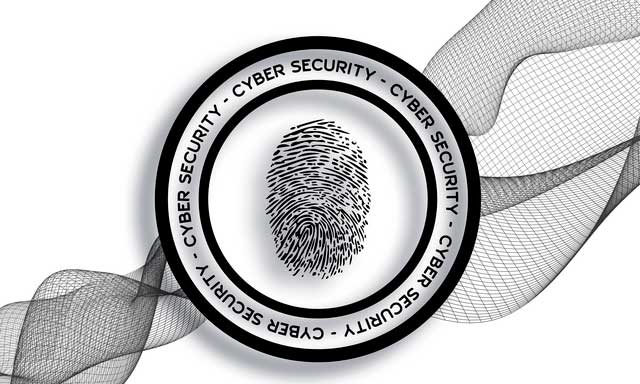When it comes to your cybersecurity, working with freelancers is just as frequent a tactic as having it all managed by members of your internal IT team.
However, while outsourcing to another team does take a lot of the strain and burden of carrying out cybersecurity projects off your shoulders, it doesn’t mean you can leave it all up to them. Clearly, there are critical steps for businesses outsourcing cybersecurity projects and, in this article, we look at 20 of them.
For the sake of the project’s success and the security of your data, you have to work with your third parties, whether it’s a cybersecurity freelancer or outsourced service provider. This is even truer if your third parties are only involved in part of the project and you have internal IT/security staff working alongside them.
Here, we’re going to look at what you still need to consider, regardless of whether you’re working with your own IT team or with freelancers, as well as tips on how to make sure your outsourced partners are working as effectively as possible.
Benefits Of Outsourcing Cybersecurity Projects
When it comes to outsourcing, some are of the belief that it’s unwise to outsource anything that’s crucial to your core processes and responsibilities. Given how important cybersecurity is, you might consider hiring internally to fill your skills gaps rather than outsourcing it. However, here are some benefits of outsourcing to consider:
- Immediate access to experts: Platforms like TopTal is making it easier to name specific requirements, such as experience with certain technologies, systems, or regulatory compliances, and to find professionals already equipped to take them into consideration.
- Around the clock support: By outsourcing, you can work with those who can match your specific time and availability needs. As such, you can get support no matter time you need it.
- Set-up time and affordability: The cost in both time and money when it comes to working with an in-house team and building it internally can delay your cybersecurity projects. Freelancers allow you to quickly gain access to the skills you need to hit the ground running, so to speak.
- Real professional experience: There is a skills shortage in the IT industry, and it can be hard to find hires beyond the freshly graduated level. As such, many freelancers and outsourced teams bring real experience and insight into cybersecurity so they can better identify threats and relevant solutions.
Outsourcing aspects of your cybersecurity project can, in essence, allow you to ensure regulatory compliance, access to the skills you need, and help you manage the costs of the project.
As such, you’re less likely to come up against delays that could hold you back from those all-important cybersecurity goals.

1. Identify Whether Outsourcing Is Right For You Or Not
When you first take the time to consider your cybersecurity solutions, there are primarily two choices you have to consider: building an internal team to handle your IT risks or outsourcing it partially or fully. Each option has their pros and cons, which need to be seriously considered.
Naturally, the positive of building a team internally is that you have full control over the method and technologies put in place to protect your business. You can change the procedure, oversee security activities, and prioritize tasks as you see fit. Furthermore, you’re building a team with specific familiarity with your own business’s needs.
However, setting up such a team is a large investment, and comes with all the responsibility of an employer.
Working with a cybersecurity service provider or freelancer means that you have much more immediately affordable access to the expertise that your need.
You don’t have to go through the recruitment process, you don’t have to pay the high initial costs of employment, and you aren’t going to have to worry about training them, either. There is a little control that’s sacrificed when working with third parties, however.
If you’re certain that outsourcing is right for you, then there is still a lot of steps to take to ensure that they can work as well with your organization as possible.
2. Perform A Cost Analysis And Budget For Your Cybersecurity

Though working with a freelancer can help you plug the gap in your cybersecurity/IT team’s skills in a more cost-effective way than hiring in-house, it’s still an investment that needs some serious consideration. As such, you should try to find the return on investment of working with cybersecurity freelancers and, as such, what your budget for them should be.
How much you are willing to spend will likely involve collaborating with members of your existing IT team, as well as any finance executives or bookkeepers within the team. From there, you are likely to find outsourced cybersecurity providers that can scale to different levels of costs.
For instance, an MSSP team can be less expensive up-front, but a long-term commitment that needs to be fit into your ongoing budget, while a freelancer may cost more to hire initially, but you don’t have to worry about ongoing costs quite as much.
3. Understand The Scope Of Your Cybersecurity Needs
First of all, before you start building your defences, you’re going to need to have a better understanding of what, exactly, you have to defend. When working with a top-tier cybersecurity provider, they will be able to help you learn more about your own needs by taking a look at the IT systems in place.
However, by being able to identify your own cybersecurity scope, you can also figure out where the gaps in the knowledge of your prospective partners might be.
Defining the inventory of IT assets is essential. This includes not only technology and applications, but locations, people, and processes.
Your computers, your networks, any Cloud software or storage you’re using, any devices connected to business assets, the people who use these assets, and the physical wiring and other connective hardware all count as part of that scope.
4. Understand Your Greatest Cybersecurity Threats
Before you lay the foundation of a cybersecurity plan and enlist the help of a freelancer in order to help make it a reality, you should also try to develop an awareness of what your greatest risk might be.
This can be done in a variety of ways, but it’s important to have the team who interacts with the different IT systems involved in the discussion.
You can select interviewees from amongst your team or generate questionnaires for them to fill in. They may not have cybersecurity expertise, but because they work on the “front lines” of the system, they may be well equipped to spot threats that you might otherwise miss out on.
You should also consider looking at the most common cyber threats, and whether they pose a significant threat to your business. This includes rogue employees with access to your systems, phishing scams, ransomware, and more.
It’s easy to find a list of the most common cybersecurity threats and to compare them with your systems and what protections you may or may not already have in place to deal with them.
5. Start Finding And Shortlisting Your Cybersecurity Solutions Partner
The two fact-finding steps above should be considered because they’re important when it comes to choosing the right cybersecurity solutions partner. There are a variety of ways to find outsourced cybersecurity, each of which should be considered.
First, of course, is the step of simply Googling it. You can also ask around amongst your network. There may be a chance that past partners, associates, or clients have worked with someone recently that they would be able to recommend.
When it comes to finding the specific expertise that you need, however, then online IT networks like TopTal could offer the quickest route to the relevant expertise. With it, you can create listings specific to your security scope, and find those with the necessary qualifications to meet your precise needs.
6. Be Sure You Can Find Providers That You Can Trust

You should be able to ask them how they can protect against the specific risks that you’re more concerned about, as well as any others that might not be on your mind. Similarly, you should ask them about whether they’re able to secure the full scope and scale of your IT system.
Another way that you can make sure that the cybersecurity services is right for you is to get an idea of how they work and who you’re going to be interfacing with. In most cases, it’s best to work with someone who is based locally or at least willing to make the trip to your property. There are a lot of off-premises cybersecurity tools that are of effective nowadays, especially in the field of crisis management and backup.
However, it’s always preferable to have someone who can make the trip to your office, look at your setup, and help you identify both vulnerabilities you didn’t know about, as well as methods of plugging those holes.
Of course, you have to be savvy about what experience they have and what they’re promising. You don’t want to entrust your system to recent college graduates, but rather those who have real experience in providing IT security services to a company like yours.
Similarly, you should beware of any providers who talk about offering a 100% guaranteed rate of protection or a magic solution that will suddenly erase threats. Those don’t exist in the world of cybersecurity. Instead, you need a partner who can react flexibly to both known and new threats.
7. Ensure That Your Team Is Ready To Carry Their Weight

Not only do you, as a business owner, manager or leader, have to be aware that there are still responsibilities on you when it comes to working with your cybersecurity contractors and helping them carry out their objectives. The same expectation is going to echo across to the rest of the team or the organization, as well.
It’s important to do what you can to install a security culture into your organization. This can be done in a variety of ways, such as holding training seminars, making cybersecurity a frequent topic of team meetings, and by giving them the route and space to share their own IT security concerns and questions.
Having an effective IT security policy and a set of best practices that can be easily disseminated throughout the office is just as important. If you don’t already have that set of practices, then you should consider working with your cybersecurity freelancer to create it.
8. Consider What You Want To Retain
Naturally, since we are looking at the steps for working with freelancer cybersecurity providers and what you can do to ensure that projects involving them run smoothly, we can assume that you have chosen to outsource some of the labour involved in the project.
However, it’s just as important to decide what you’re going to retain and what aspects of the project your internal team are going to handle.
Take the time to decide who is responsible for different tasks in the project, such as governance, risk management, compliance, and so on.
Where roles overlap between your outsourced cybersecurity partner and your own team, there must be clearly set divisions of labour and means of communication between them so they can work efficiently and without major barriers.
9. Take The Necessary Steps To Safeguard Confidential Information

Third party cybersecurity partners are likely to handle some amount of confidential or sensitive data. The more they handle, the greater the potential risk to your business, a risk that needs to be mitigated.
If they are hosting any of your data off-site, then a visit to those sites to evaluate their own data protection and security controls may be essential, for instance. Otherwise, you should consider limiting how much confidential data your security providers are going to handle themselves.
For working on highly sensitive data, you may also want to consider things like virtual meeting rooms and offices that offer file security and the ability to access files online for a brief period of time, rather than sending files directly to those that you’re working with.
Some level of trust will likely need to be afforded to whichever freelancers you work with on your cybersecurity projects, but it’s up to you to decide what that level of trust is.
10. Ensure Your Cybersecurity Provider Is Ready For Disaster
With all going well, your cybersecurity partner will put in places the technologies and processes that can protect your systems and data on a day-to-day basis, when everything is going precisely as it should. However, what about in the event of a disaster?
Disaster management and backup services from a cybersecurity specialist can help you protect against your own crises. But what about a crisis that hits your provider? Are they able to keep up their operations if their business or equipment is hit by natural disasters, blackouts, or other crises?
Ask your vendor or freelancer what their approach to crisis management is and ask them how they can continue to work in the event that such a crisis happens. You may even want to consider running a simulation with them, to see how they will be able to handle your needs while their own infrastructure is compromised.
As such, your cybersecurity partner should be ready to help you implement your continuity plans in the midst of a disaster even if they’re currently managing their own crisis.
11. Set Your Objectives In Stone
Hand in hand with your cybersecurity provider, you should naturally be going through the steps of developing a comprehensive and effective security plan in coordination with key decision makers and relevant leaders in your business.
However, it’s important to make sure that the objectives of this plan and the steps that are going to be taken towards it are formally documented. For one, there is always the chance that you may not be working with your existing cybersecurity partner in future.
You need to make sure that your next partner or, indeed, your own internal IT team is able to carry on the work that has been completed up to that point in time.
Furthermore, any senior leaders, board members, and C-suite members have to be informed of strategies, how they could affect the business, and to give them their approval.
Furthermore, setting your objectives and plan down will give you and your outsourced cybersecurity partner the opportunity to identify any costs of implementing the plan, allowing you start budgeting for it as early as possible.
12.Define Your Requirements For Outsourced Provider With A Service Level Agreement

With the steps above, you have detailed the steps of your cybersecurity project, what parts you want to outsource, and which parts you want to retain. From there, you have to then define the requirements of the work you need from your outsourced partner.
Ensure that both you and your freelancer of choice sign a service-level agreement detailing the scope of their work, the objectives they have to fulfil, and the steps by which they will carry out their work.
Without detailing those requirements and ensuring that they are acknowledged and agreed to, it can be difficult to control how your freelanced cybersecurity partner works as a member of your team.
Furthermore, should they not live up to their end of the bargain, the agreement will serve as proof that they knowingly didn’t provide the services that they have promised, allowing you some level of legal protection and recourse.
13. Establish The Need For Regulatory Compliance Standards
There is a range of different regulatory compliance bodies that your team may have meet the standards of. Your team may be well versed with regulations such as the GDPR, but you need to make sure that your chosen freelancer is, as well.
On platforms like TopTal, many will list the regulatory bodies and standards they are familiar with, but it might be wise to go over them together and perhaps even to make compliance part of their service level agreements.
14. Create A Means Of Open Dialogue
Simply put, with a matter that is as important and complex as your cybersecurity, you can never risk being left “out of the loop.” Nor can you risk being unable to reach your provider when you need them most. As such, creating or ensuring a method of open dialogue and transparent communication is crucial.
Many of the teams you might work with will ensure this by having a case manager assigned specifically to act as you “go-to” person. Platforms like TopTal can ensure a similar level of open communication by using an app that gives you a direct line to your cybersecurity partner.
This openness and transparency in communication is just as important for the reason that you and your provider are going to have different perspectives on the requirement and implementation of the plan.
As such, you should also establish clear responsibilities for when and how to communicate with one another. For instance, if they have taken another step towards an objective in your IT security plan, they should know to inform you about it so you can stay up to date on your progress.
15. Ensure A Secure Connection For Your Freelancers
As mentioned, it’s only natural that you’re likely to share some sensitive data with the freelancers and teams who are responsible for carrying out your cybersecurity projects. As such, they must have a secure way of accessing that data.
If you’re working with those who aren’t physically on-site with you, your team, and your equipment, then you need to make sure that they are least working from secure locations, and on secure networks. Though the majority of IT freelancers will be well aware of this, public Wi-Fi hotspots have become a common a serious risk to the cybersecurity of businesses that work with third parties.
You may be able to set some standards of security for your outsourced cybersecurity providers. This can include providing them with them means to encrypt their traffic, such as paying for a VPN that they can make use of.
Otherwise, ask them what hardware, software, and networks they will work with while helping you with your own cybersecurity projects. If they’re not able to provide a good answer on how they will secure their connection and the data they send/are sent, then you may want to consider working with someone else instead.
16. Consider A Nondisclosure Agreement
Since your freelancer or service provider is likely to get hands on with your IT system, cybersecurity provisions, and all kinds of digital assets, it’s only natural that you should consider having them sign a nondisclosure agreement
These NDAs a typically used whenever confidential information is being disclosed from within the business to anyone who works outside it. They are also commonly known as confidentiality agreements, though sometimes confidentiality clauses can be a part of service level agreements.
If you’re in need of an NDA and you don’t have a legal team that’s ready to create one for any freelancers or third parties that you work with, you should consider hiring some outside counsel to create one. There are some things that can’t be included in an NDA, such as any information that the signatory had before signing the NDA.
If your freelancer or outsourced cybersecurity provider is not willing to sign any kind of NDA, then it may be worth looking elsewhere. That’s a significant red flag and it shows that perhaps they are not ready to be trusted with your sensitive data.
If you’re using external freelancing networks like TopTal, you should look into whether they have the freelancers on their network sign any privacy agreements or NDAs, digitally or otherwise. Some platforms may take care of the work for you.
17. Support The Work With A Collaborative Process Model
Collaborative project management and communication software can help you easily connect your internal team with third-party providers of support and expertise. As such, it’s much easier for everyone involved in the project to communicate, to collaborate, and to share resources.
Without effective means to look over the workflow of a project and to communicate from team to team, it’s easy for bottlenecks to form. As such, an internal member of staff could be waiting on your freelancer to complete a part of the project before they’re able to proceed with their own.
As mentioned, having clear lines of communication with your freelancer or outsourced cybersecurity team is essential, especially if they’re not working on-site with you and your team. Project management and collaborative process models (like AGILE) can be essential for just that reason.
18. Ensure Regulatory Compliance Throughout
As mentioned above, establishing your regulatory compliance standards and which bodies you need to meet the standards of, whether they be GDPR, HIPAA, PCI DSS, SOC, or otherwise. Throughout the project, your Data Protection Officer should be ensuring regulatory compliance of all team members and processes.
However, they also need to check in on your freelancer to make sure that they’re working within the bounds of the relevant regulations, as well. Make sure your Data Protection Officer is informed of their role in the project and the need to assure their compliance. Failure to do so can result in penalties.
In the case of the GDPR, noncompliance could see your organization being fined for up to 4% of annual earnings or up to €20 million.
19. Work On Relevant Skills In-House
If you have your own internal security team, you should be trying to help them develop their own skills, experience, and understanding of your security needs. Freelancers and third-party service providers can help you fill your skills gap for a project, but unless you plan to incorporate them in the long-term, you have to evolve your own security team, too.
Have your internal IT and cybersecurity professionals work with your outsourced freelancers and companies. Not only can it improve your relationship with them but can siphon some experience and insight to have it incorporated in your own organization.
Security is a key concern in modern business and must also be a central part of your work culture. As such, regardless of their existing expertise, you should have your relevant team members continuously developing relevant skills in-house. As such, you may eventually be able to stop relying on freelancers and outsourced teams, entirely.
20. Consider The Outcomes Of The Partnership
Finally, once the project is over, it’s worth taking a look back over the partnership you had with your outsourced cybersecurity professional and how well you worked together. There are a range of reasons to review the partnership.
Firstly, consider the role that the freelancer played in the team during the project. Is that role still necessary for other projects going forward and, if so, are you going to need to rely on outsourced help yet again to fulfil it? Will you be able to fashion someone in-house to fulfil the same role, will you consider hiring someone, or does freelancing meet your specific needs for the moment without accruing too much in the way of costs?
Of course, it’s worth looking at the outcomes simply to figure out whether you would want to work with that specific freelancer yet again. With platforms like TopTal, you can leave reviews and comments on the professionals you work with, so when you’re in the market for a freelancer again, you can see if your old partner is available, should you want to work with them.
Are You Ready To Outsource Your Cybersecurity?
Outsourcing with the right team, the right preparations, and the right protections can ensure that your business is protected from all kinds of cybersecurity risks. Many would agree that “the right team” is the most important part of that equation.
Don’t rush into any contracts or agreements before you’ve had a good look at the market and found the team that seems the best equipped to handle the needs of your business in particular.
Hopefully, you’ve found the steps and tips to outsourced IT success helpful. Regardless of how your outsourced team or freelancer handles it, you should always be aware that it’s still your responsibility at the end of the day.
In conclusion, outsourcing cybersecurity projects can be a strategic decision for businesses, but it requires careful planning and execution.


